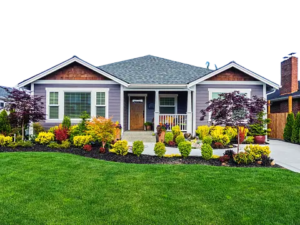Have you ever walked into someone’s home or a room and thought it looked absolutely breathtaking? The place itself might not have been so spectacular, but the lighting made it appear that way. That is the power of proper lighting in your home. It can often make or break a room. How? Not enough lighting can make a room seem boring, small and uninviting. Too much lighting can dull the otherwise beautiful colours of a room and make it feel too uncomfortable to enjoy. So how do you go about setting up lighting the proper way in your home?
Firstly, concentrate on one room at a time. It is extremely difficult to get a lighting scheme that works throughout an entire house. What works in one room does not work in another. Here is a rundown of the type of lighting you should consider for different rooms:
Living Rooms: The living room is where the action takes place. Most people spend their time in here reading, watching television or lounging around. Because it is used for so many things, the lighting should be easy to control with regards to the dimness and position in the room. Overhead track lighting is ideal for the times you want to read. A dimmer switch should be included so you soften the lights when you do not need them as bright. Floor lights should be placed in areas where lighting needs enhancement or if you want a more relaxing ambience and be able to turn the main ceiling lights off. Take your television into consideration as the glare coming off of it should not conflict with the lights in the room.
Entryways: This is where first impressions about your home are made so make sure the mood you create with your lighting is warm and inviting. This means relying on softer lights using sconces, chandeliers or hanging pendants. If you have a mirror in your hall, this will put a nice emphasis on your lighting and make your entryway seem bigger.
Dining Rooms: Chandeliers, pendant lights or track lighting in your dining room should be directly over the dining room table to evenly distribute the lighting to everyone at the table. Be sure your lighting has dimming capabilities so you can create a less dramatic atmosphere during times when you are just enjoying coffee and light conversation.
Kitchens: Lighting in a kitchen needs strategic planning. After all, you certainly want to be able to see when you are using sharp instruments for cutting, dicing and slicing. Recessed lighting is ideal for kitchens and can be placed in specific places where you need strong light. Another important place for lighting is under your cupboards. If you eat in your kitchen, make sure there is adequate light over the kitchen table that can also be dimmed when you do not need it so bright.
Bathrooms: Bathroom lighting can be tricky because there are a few different moods you may want to create—softer ones for bath time, brighter ones for grooming and precisely placed ones for specific functions (like having a single light over the shower when you are using it). The main lighting should be adjustable so that you are not taking your relaxing bath in a brightly-lit room, but you also want to be able to have enough lighting for shaving or applying make-up. Something to consider—candles to create a relaxing and spa-like feeling right at home.
Bedrooms: You need different types of lighting in a bedroom. On one hand, you need an overhead light so you can see what you are doing whether it is getting your clothes ready (you do not want to have mismatched socks or shoes) or combing your hair. At the same time, you want to be able to unwind and relax which is why nightstand lamps are a must. And because each side of the bed has one, you only need to use the one you want so you do not disturb your sleeping partner.
Home Offices: Take a two-prong approach to lighting your home office. Your desk should have a lamp on it that brightens up your work area so you can see what you are doing. But you also need a dimmable overhead light for the times you just want to hang out and relax.
Another thing to consider when it comes to your home’s lighting is the type of bulb you should use. Low energy bulbs may save you money, but they are not necessarily good for areas where you need a strong light since they offer a lower level of brightness than standard light bulbs. Incandescent bulbs are much brighter and can be used where ever you need strong light. Halogen bulbs emit light that is similar to natural daylight and are perfect for desks. They come in low voltage and main voltage options and are energy efficient. The downside is that halogen bulbs usually cost more and get very hot.
Yes, lighting is as important as the furniture and flooring in your home. Mess it up and your perfectly placed piano can look boring and clunky. Do it correctly and your guests will think you are a virtuoso!

Leave a Reply
You must be logged in to post a comment.